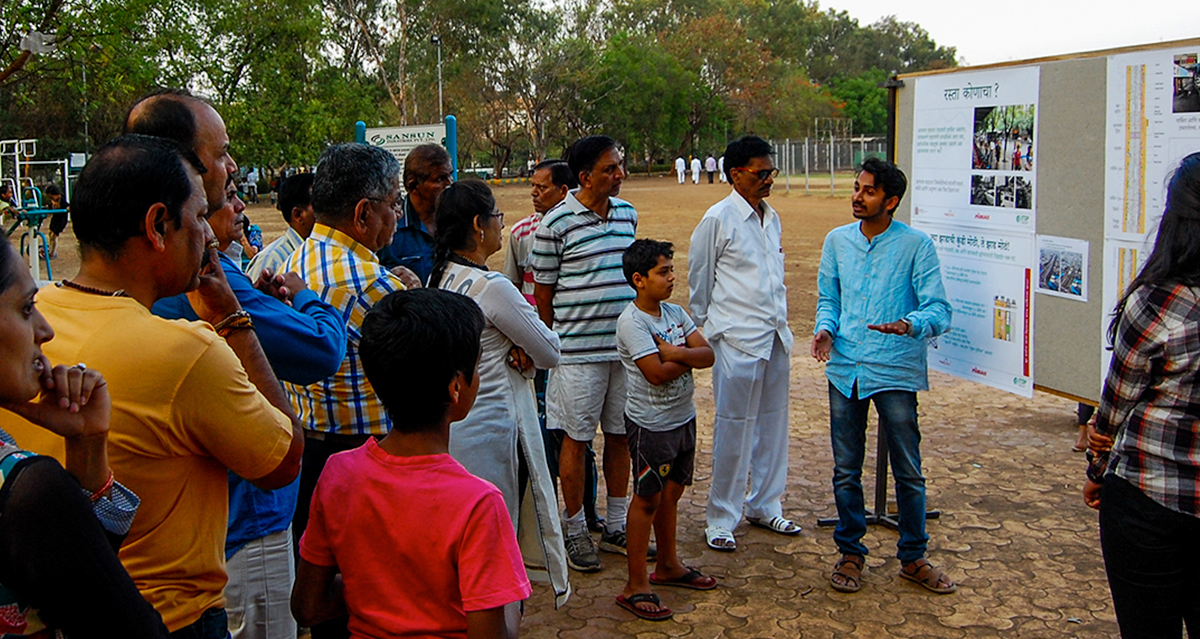To most folks, Nashik might seem like a conundrum; an ancient pilgrimage centre suavely flaunting the title “wine capital of India”. Indeed a unique juxtaposition. Nashik does well in weaving its conventional roots with its aspirations of modernity.
According to the 2015 UN stats, Nashik’s population count stood at 1.70 million—making it the third largest urban cluster in Maharashtra. In chasing its dream to become a metropolis, the city administration has stumbled upon some harsh ground realities; some of which have stifled Nashik’s transport sector. Though the city has a culture of walking and cycling (one out of every three trips), rampant urbanisation has helped spawn rapid motorisation. At present, the city roads accommodate only motorists—which growing at 10% per annum (2014 estimates) and constitutes a good 11% of the state’s vehicle population—while pedestrians and cyclists struggle for space.

A factor that most tier-II cities overlook in the thrust of urbanisation is the resulting population explosion. Transit-Oriented Development (TOD) and sustainable transport look to resolve issues that arise due to the same. In 2015, Nashik ensured a TOD Corridor was part of the Development Plan 2031. Additionally, the Nashik Municipal Corporation began developing a Comprehensive Traffic and Transportation Plan in 2017. In both cases, we provided seminal reviews to ensure the technical soundness of the projects.
Furthermore, Nashik took a cue from Pune’s successful revamp of its footpaths and streets and appointed urban designers to chart out ‘Complete Street’ designs on designated stretches. These streets will feature wide footpaths, safe pedestrian crossings, and protected cycle tracks. Given our expertise in urban street design, Nashik took its reviews under consideration for its urban street design at Old Agra Road.
Since sustainable transport is all-pervasive, multiple stakeholders, such as students, residents, and the media were involved in the process of reimagining mobility in the city. This included us reviewing entries from architecture students on subjects like street designs and Complete Streets.
One question that was often raised in these interactions was: whom do the streets belong to? In an open-for-all exhibition, organised by us with Nashik District Maratha Vidya Prasarak Samaj’s College of Architecture (also known as NDMVP), Nashik First Foundation, these students highlighted the need for safer and complete streets.

As mentioned above, cycling has been an integral part of Nashik and ‘Cycle Day’ looked to celebrate this culture. A joint effort by the Marathi newspaper Sakal and us, the event brought together cycle enthusiast and promote cycling among all.
From where it stands, Nashik has a lot of scope to improve its urban mobility but it needs to put forth a sustained effort. And sustainable system of transport will ferry it to the next tier.









